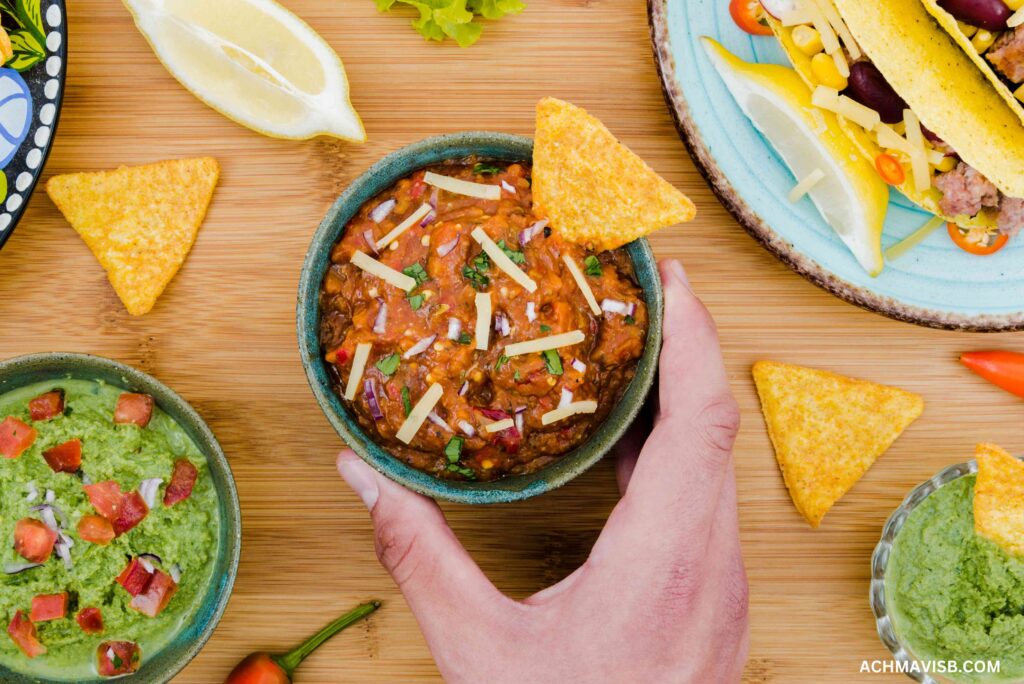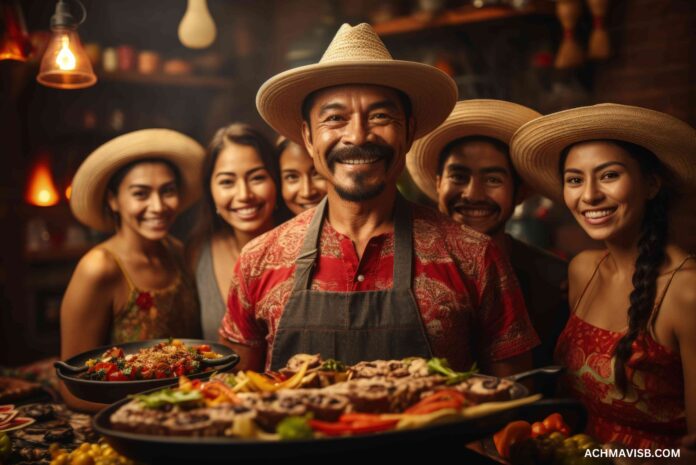Introduction
When we think of Mexican culture, our minds often gravitate toward colorful festivals, flavorful food, and lively entertainment. But there’s one name that uniquely combines both cuisine and entertainment: Chiñindrina. You might have heard the name of a beloved television character, or perhaps you’ve tasted it as a popular street food. Either way, exploring Chiñindrina opens up a window into the heart of Mexican traditions, where laughter, food, and heritage blend seamlessly. So, what exactly is Chiñindrina, and why does it hold such a cherished place in Mexican culture? Let’s dive in and find out.
Must Read: Her Love Is a Kind of Charity Password: Unlocking the True Meaning
The Origin of Chiñindrina
Chiñindrina has roots that go deep into Mexican culture in terms of entertainment and cuisine. The name originates from the word Chilindrina, which refers to a freckle-faced, mischievous character from a beloved TV show. However, it also refers to a popular Mexican street food that combines crispy pork rinds with savory toppings. The dual identity of Chiñindrina—both as a TV icon and a delicious dish—highlights the intricate relationship between Mexican media and food culture. Both forms of Chiñindrina represent joy, family, and the everyday lives of Mexican people, symbolizing unity and fun.
Chiñindrina in Mexican TV
Chiñindrina, or more precisely La Chilindrina, made her debut in the 1970s Mexican television show El Chavo del Ocho. Created by Roberto Gómez Bolaños, this show became an instant hit across Latin America. La Chilindrina, played by María Antonieta de las Nieves, is known for her pigtails, thick glasses, and iconic gap-toothed smile. Her character represents innocence mixed with a bit of mischief, and she often acts as a mirror for the experiences of Mexican children at the time. La Chilindrina is not just a character; she is a symbol of growing up in Mexico, and she continues to be beloved by audiences worldwide.
The Popular Character: La Chilindrina
La Chilindrina is a young girl who is full of energy and is always finding herself in tricky situations. Her interactions with El Chavo, the main character of El Chavo del Ocho, are both hilarious and heartwarming. Her character resonates deeply with viewers because she embodies the innocence and curiosity of childhood. La Chilindrina’s quirks, like her exaggerated crying or her playful banter, have made her an unforgettable part of Mexican television history. She not only brings joy to viewers but also serves as a reminder of simpler times.
Chiñindrina as Street Food
Beyond television, Chiñindrina has another face in Mexico: street food. This dish is a favorite at markets and food stalls, made from puffed-up pork rinds (chicharrón) and topped with ingredients like beans, lettuce, cheese, salsa, and sour cream. It’s crispy, savory, and bursting with flavor—much like the character La Chilindrina brings life and laughter to the screen, this dish brings vibrancy to the streets of Mexico. Eating Chiñindrina is an experience in itself; it’s fast food with flair, combining crunchy textures and bold flavors that represent the spirit of Mexican street cuisine.
How to Prepare Chiñindrina
Making Chiñindrina at home is easy and fun, and the ingredients can be customized to your taste. You start with a large piece of chicharrón, which acts as the base. On top, you can layer beans, shredded lettuce, pickled jalapeños, diced tomatoes, grated cheese, and a generous drizzle of sour cream. Salsa is a must, and some people like to add avocado or other toppings depending on regional preferences. The result is a crunchy, flavorful dish that hits all the right notes: savory, tangy, and just a little bit spicy.
Chiñindrina and Mexican Heritage
Chiñindrina, in both its forms, is deeply tied to Mexican heritage. The character La Chilindrina represents the everyday child in Mexican society, reflecting cultural values like respect for elders, the importance of community, and the joy found in simple pleasures. Similarly, the food version of Chiñindrina showcases the ingenuity of Mexican street vendors who take humble ingredients and transform them into something delicious and iconic. Both forms of Chiñindrina reflect a rich tradition of creativity, laughter, and resilience in the face of adversity.
Chiñindrina's Role in Pop Culture
Chiñindrina, particularly in her television form, has had a lasting impact on pop culture. Memes featuring La Chilindrina regularly circulate on social media, keeping her spirit alive for younger generations. Her image is often used to represent childhood nostalgia, and she has even appeared in animated form in various adaptations. The dish Chiñindrina also continues to thrive as a street food staple, with vendors putting their own spin on it, ensuring that it remains a relevant part of Mexican cuisine.
Variations of Chiñindrina Aacross Regions

Although the basic recipe for Chiñindrina remains the same, different regions in Mexico add their unique twists. In some places, you might find a version topped with spicy marinated pork, while other vendors opt for adding radishes or even mango for a sweet contrast. These regional variations showcase the versatility of the dish and highlight how Mexican cuisine is constantly evolving, influenced by local tastes and ingredients.
The Influence of Chiñindrina on Future Generations
La Chilindrina has influenced not only entertainment but also the way Mexican children see themselves. Her character broke down stereotypes, allowing girls to embrace their individuality and express themselves freely. The same can be said for the dish Chiñindrina—its simplicity and adaptability inspire future generations of cooks and food lovers to experiment and create something new while still respecting tradition.
Chiñindrina: Food or Character?
The fact that the same name refers to both a beloved TV character and a popular street food raises an interesting question: which Chiñindrina came first, and why does the name resonate so strongly in both contexts? In truth, both forms of Chiñindrina have grown to represent the heart of Mexican culture, and neither can be separated from the other. Both evoke a sense of nostalgia, comfort, and belonging, making them equally iconic in their own right.
Celebrations Featuring Chiñindrina
Whether it’s a birthday party featuring a La Chilindrina cake or a family gathering where Chiñindrina is served as a snack, this cultural icon plays a role in many celebrations across Mexico. The joy that La Chilindrina brings on screen translates to the happiness found when sharing a meal with loved ones, particularly one that features such a beloved dish.
Chiñindrina’s Global Influence
With the popularity of El Chavo del Ocho spreading to countries as far away as Brazil and the United States, La Chilindrina has become a global icon. Similarly, the food version of Chiñindrina has found its way to international food festivals and is gaining recognition outside of Mexico. This dual identity has helped to export a piece of Mexican culture to the world, making Chiñindrina a symbol of the country’s rich traditions and global reach.
Why Chiñindrina Resonates with Audiences
Chiñindrina resonates with audiences because she represents authenticity. Whether it’s the character’s unpolished yet lovable personality or the dish’s simple yet delicious ingredients, there’s an honesty and down-to-earth quality that people find relatable. In a world that is constantly changing, Chiñindrina serves as a reminder of what is timeless: humor, food, and the importance of community.
Chiñindrina and Social Media
In the age of social media, Chiñindrina has found a new life. Fan pages dedicated to La Chilindrina continue to grow, and food bloggers often feature Chiñindrina in their posts, showcasing different recipes and ways to enjoy this street food. Whether in the form of nostalgic clips from El Chavo del Ocho or mouth-watering images of the dish, Chiñindrina continues to captivate audiences online.
The Enduring Legacy of Chiñindrina
The legacy of Chiñindrina, both as a character and as food, is one of joy, creativity, and resilience. The laughter brought by La Chilindrina and the satisfaction of a delicious plate of chicharrón with toppings are testaments to the enduring appeal of Mexican culture. Chiñindrina will continue to inspire future generations, reminding them of the importance of laughter and good food in life.
FAQs
1. Who created the character La Chilindrina?
La Chilindrina was created by Roberto Gómez Bolaños and portrayed by María Antonieta de las Nieves in the show El Chavo del Ocho.
2. What is Chiñindrina street food?
Chiñindrina street food is a dish made from crispy pork rinds (chicharrón) topped with beans, lettuce, cheese, salsa, and other toppings.
3. Why is Chiñindrina important in Mexican culture?
Chiñindrina, both as a character and as food, represents the joy, creativity, and traditions of Mexican culture, making it a cherished icon.
4. Can I make Chiñindrina at home?
Yes, Chiñindrina is easy to make at home using simple ingredients like chicharrón, beans, cheese, and salsa.
5. How has Chiñindrina influenced pop culture?
La Chilindrina continues to appear in memes, television reruns, and even animated adaptations, making her a lasting figure in Mexican pop culture.
Conclusion
Exploring Chiñindrina offers a fascinating look into the blend of entertainment and cuisine in Mexican culture. Whether you’re laughing at La Chilindrina’s antics or enjoying a crispy, flavorful dish, both versions of Chiñindrina represent the heart and soul of Mexico. With its rich history and continued relevance, Chiñindrina is sure to remain a cultural icon for years to come.
Must Read: Who Is Stephanie Fuggetta?
